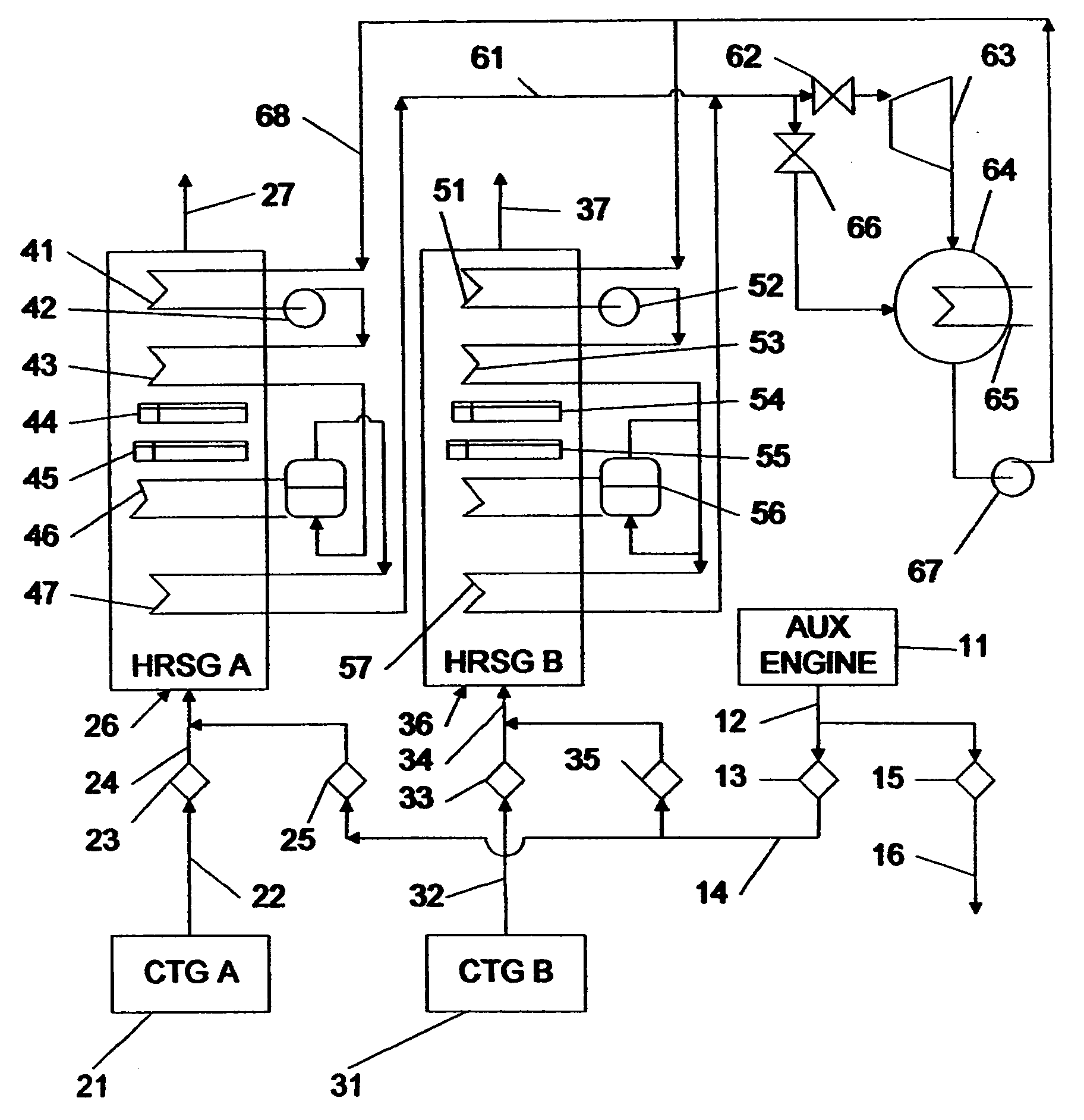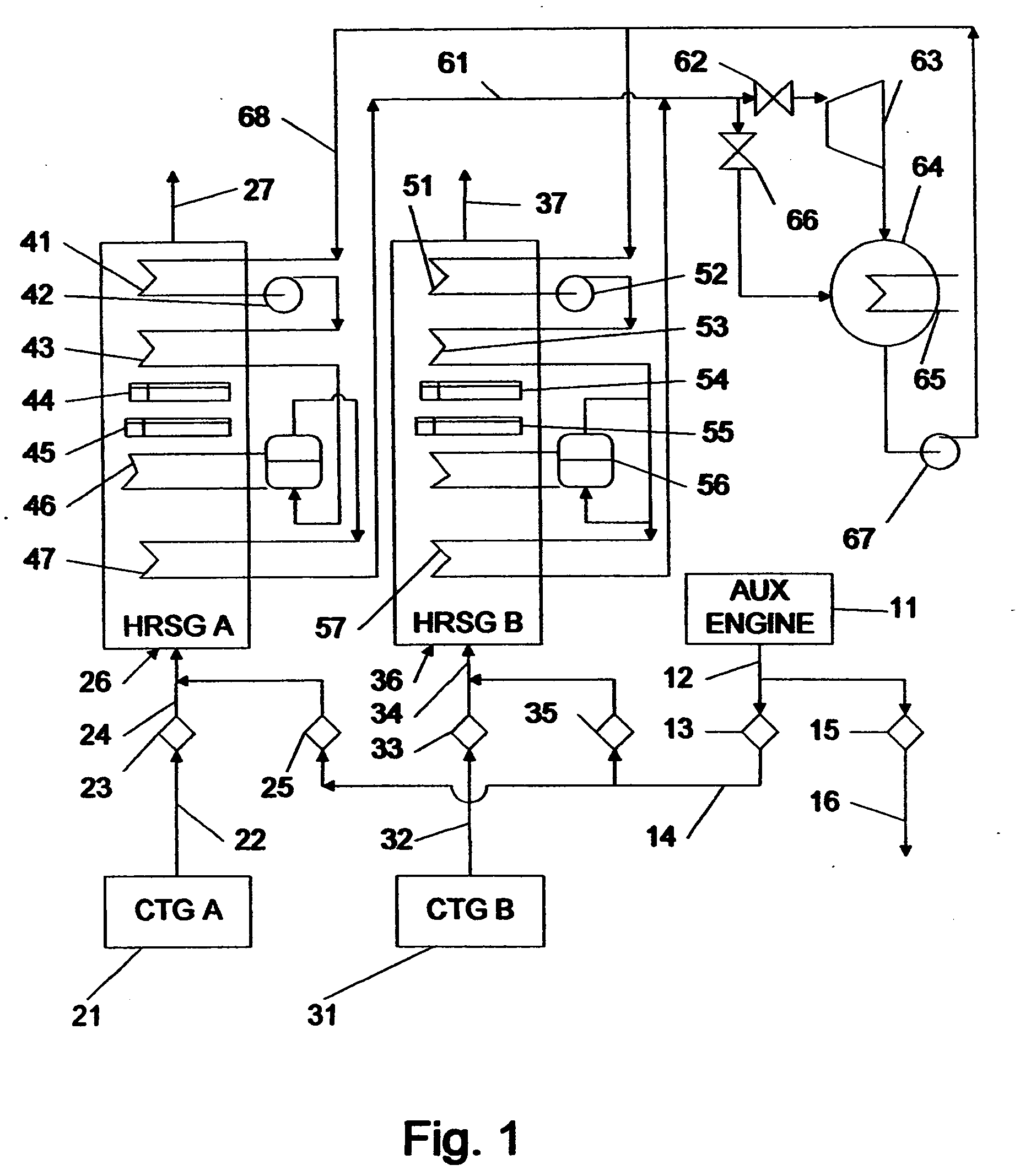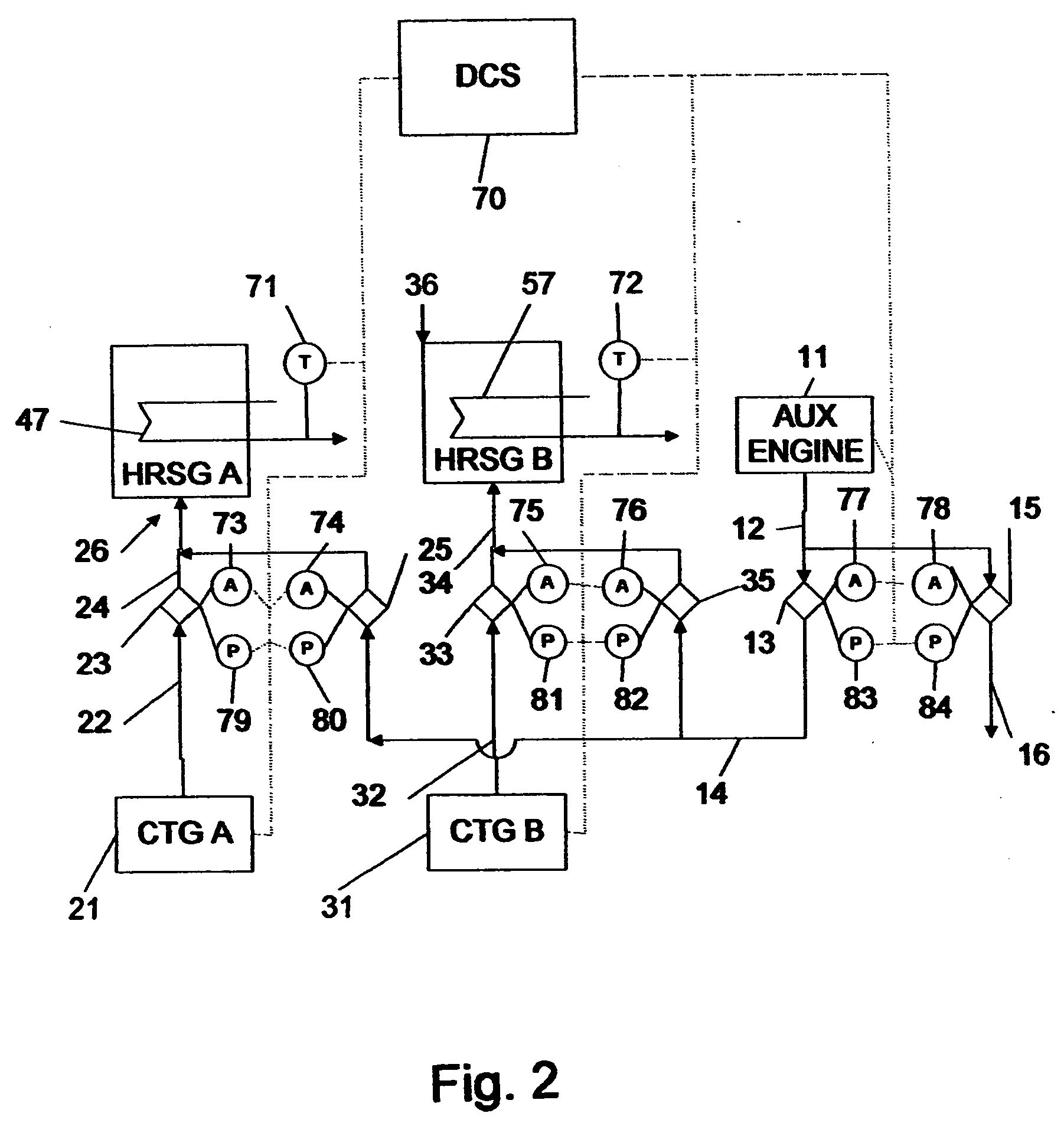Method and apparatus for combined cycle power plant operation
a combined cycle and power plant technology, applied in the direction of engine starters, machines/engines, turbine/propulsion engine ignition, etc., can solve the problems of significant heat generation, stress in the superheaters, and the restriction of ctg from operating at low loads for extended periods of tim
- Summary
- Abstract
- Description
- Claims
- Application Information
AI Technical Summary
Benefits of technology
Problems solved by technology
Method used
Image
Examples
Embodiment Construction
[0105] A. A Representative System
[0106] A preferred embodiment of the system of this invention is schematically illustrated in FIG. 1. In this embodiment, two CTG / HRSG trains are shown, identified respectively as trains A and B, although it will also be understood that this invention can readily be adapted to work with one, three or more such trains. For simplicity, the preferred embodiment shows a single pressure HRSG, a non-extraction-type STG, and a deaerating condenser, although more complex power plant designs can also be adapted to utilize this invention in a manner that will be appreciated by one skilled in this art. In an alternative embodiment, the HRSG can be replaced by another type of heat recovery system.
[0107] Hot gas generator or source unit 11 can be an auxiliary engine or burner, or a small gas turbine, or a diesel generator. In accordance with preferred embodiments of this invention, hot gas source unit 11 is sized so as to be capable of generating only a limited...
PUM
 Login to View More
Login to View More Abstract
Description
Claims
Application Information
 Login to View More
Login to View More - R&D
- Intellectual Property
- Life Sciences
- Materials
- Tech Scout
- Unparalleled Data Quality
- Higher Quality Content
- 60% Fewer Hallucinations
Browse by: Latest US Patents, China's latest patents, Technical Efficacy Thesaurus, Application Domain, Technology Topic, Popular Technical Reports.
© 2025 PatSnap. All rights reserved.Legal|Privacy policy|Modern Slavery Act Transparency Statement|Sitemap|About US| Contact US: help@patsnap.com



